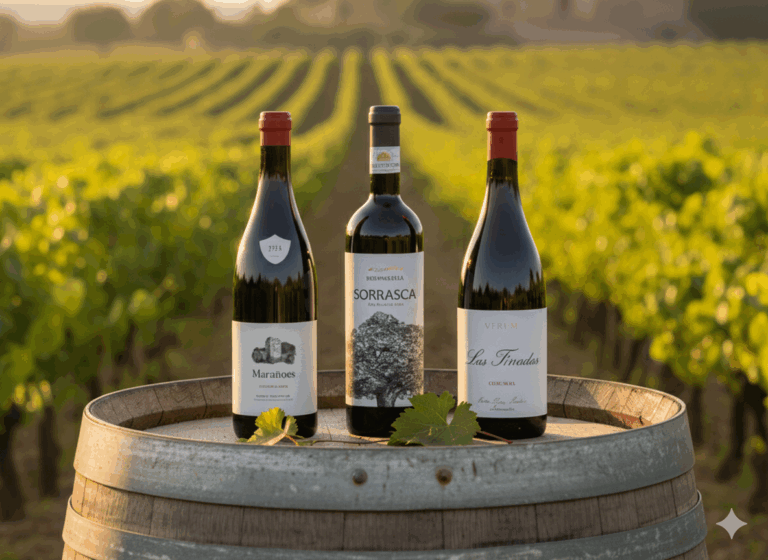[et_pb_section fb_built=”1″ _builder_version=”4.16″ _module_preset=”default” global_colors_info=”{}”][et_pb_row _builder_version=”4.16″ _module_preset=”default” global_colors_info=”{}”][et_pb_column type=”4_4″ _builder_version=”4.16″ _module_preset=”default” global_colors_info=”{}”][et_pb_video src=”https://youtu.be/KGhyS4VZVt8″ _builder_version=”4.23.1″ _module_preset=”default” width=”75%” width_tablet=”85%” width_phone=”100%” width_last_edited=”on|phone” module_alignment=”center” global_colors_info=”{}”][/et_pb_video][et_pb_text _builder_version=”4.23.1″ _module_preset=”default” global_colors_info=”{}”]
Transcript:
Hello, bonjour, and welcome to your new Bonner Private Wines video. Today, I want to continue exploring with you and understanding better and deeper where and why Argentina has so many wine wonders. History and techniques of the European wine production is incredibly well documented and you know a good chunk of it if you’re following our wine journey here, but not many talk about the origins of wine in the Americas.
00:00:31:16 – 00:01:04:17
So let’s change this a little bit. Today we’re going to talk about a grape known as Criolla in Argentina. A grape we love at the wine club, as we’ve sent you examples to taste before like this one. A grape as we see whose origins will take us far beyond Argentina. It’s not only important for Argentina, it’s going to take us all across the Americas as it’s present in all of South and central America, and it’s even significant in the US wine heritage.
00:01:04:18 – 00:01:47:06
Let’s explain. Let’s dig into it. Understanding this Holy Wine of the Americas is going to take us through a little bit of history and a bit of genetics as well in grape breeding. So it’s somewhat technical, although I’ll keep it super simple, as simple as possible for you here. It’s well worth it to really grasp in how extraordinary that these wines are today when you taste them.
00:01:47:11 – 00:02:10:00
As always, it takes a little bit of effort to acquire the knowledge and understanding so you can eventually truly and deeply understand. We know. So bear with me for a moment. I promise. It’s worth it to know about this grape. As you know, the first settlers in the Americas came from Europe and in South America, they were mainly Spanish.
00:02:10:00 – 00:02:46:04
The Spaniards not only liked their vino, but they needed it for their religious, religious needs as the holy wine. So they brought with them vine cuttings when they colonized and started viticulture on the continent. The two most important types they used were then at the time Moscatel de Alexandria, or Alejandria, and Listán Prieto. Muscatel being the famed Muscat grape that you would have heard about, revered for centuries by the Romans all around the Mediterranean.
00:02:46:04 – 00:03:15:10
That same grape, the second red grape from La mancha in central Spain, another Spanish grape. Basically, the Spanish planted those two grapes red and white everywhere they settled, which is why it’s still significant today in South America, where it’s suitable to grow grapes everywhere where you can grow grapes, not tropical America. So Argentina, Chile, but also Peru or even Bolivia.
00:03:15:11 – 00:03:57:12
The ability to Mexico and even the west coast of North America, like in California, obviously you just you don’t spend hundreds of years planting vines everywhere on this huge continent without having some repercussions. Over the following centuries and up to even today. The word itself, criolla or criolla, as they say in the Argentine accent in Argentina, is a generic word, originally meaning in Spanish, cribbed.
00:03:57:14 – 00:04:32:09
That became synonymous, was being cribbed or nurtured and developed in the Americas. Created in the Americas or made in the Americas, if you wish. So the term closure essentially in its literal meaning, can designate also a person or music or food of Spanish descent, but born and evolved in the Americas. In this case, it’s grapes and wine. Those two initial grapes, the white Muscatel and the Red Listán that we talked about and were planted extensively.
00:04:32:09 – 00:05:09:00
But viticulture at the time was quite rudimentary. You didn’t have modern nurseries to clone and multiply those grape varieties. So over the decades, those grapes evolved. Crossings were made in the fields in the vineyard, and some natural selections occurred, if you wish. Every country also came up with a different name for them as well. The result is that you have over 100 varieties today that have been identify so far falling under the designation Criolla in South America and still cultivated to this day.
00:05:09:00 – 00:05:46:14
In fact, all the fusions are now the oldest vineyards around old South America. As you find 60 year old vineyards, a hundred year old vineyards, and up to 200 year old vineyards still cropped to these day, especially in those remote locations cropped by old local families. Such as those we get our wines from the extreme altitude vineyards of the Andes Mountains in the Salta province of Argentina.
00:05:46:16 – 00:06:17:15
The main criolla wines still found today are first, the one known in Argentina as the criolla chica, the “little criolla” is what it means, one example that you know quite well and tasted it was the one made by Agustin Lanus and his delicious Sunal Ilógico Criolla. This grape is a direct descendant of this list, and the red grapes that we’ve talked about that was introduced by the first Spanish conquistadors.
00:06:17:17 – 00:06:51:24
If you go to Chile, that same grape, some vineyards still produce it under the name País. One of the many synonyms that it’s got. In Peru, it’s called the Negra criolla. And in Bolivia, the missionera. In the U.S. it even exists today, and you may have heard about it — in fact, if you’ve spent some time in California, it’s been found recently through genetic matching that this is the same grape or very close relative to what’s known here as the mission grape.
00:06:52:05 – 00:07:17:05
Fascinating, isn’t it? Then this listán grape is not found in Spain anymore. It’s an old Spanish grape that’s been sort of abandoned on the continent, except perhaps anecdotally. But you can still find some listán wine on the Canary Islands, those remote Atlantic islands off the coast of Africa that belong to Spain, they planted it a long time ago.
00:07:17:05 – 00:07:49:09
And it still survives on the Canary Islands today. All the noticeable criolla grapes include what’s known in Argentina as the criolla grande, as opposed to the Chica, grande is the grand, the big criolla, which is believed to be a crossing between those two original grapes, the muscatel and the Listan. So an evolution of these historic breeds. Some even believe that it may have been influenced from by the famous Spanish tempranillo as well.
00:07:49:09 – 00:08:17:06
So a bit of a crossing breeding with different grapes from Spain. Torrontés, the iconic Argentine white grape that still produces many white wines in Argentina that you can essentially find and enjoy today is also a criolla grape, even though it’s not name criolla, but it was born and bred in Argentina. It’s unique and exclusive to the country.
00:08:17:12 – 00:08:43:20
You see at the Bonner Wine Club we do love criolla, not only because it tastes very good, it’s lighter in body, which allows it to be enjoyed really simply, without being overwhelmed by the power, yet it’s fruity and spicy. Furthermore because it comes from those very old vines, low yields kept by old families or vineyards or vines or terroirs,
00:08:43:20 – 00:09:19:20
it’s very concentrated and very expressive. It’s a remarkably drinkable, approachable wine that has depth of flavor too. And not only has it got depth in the taste and the aromas, but also depth in its history, depth in its cultural heritage, and significant for the whole American continent. And now, you know, I don’t want to spoil anything here, but I hear we do have the privilege of enjoying another criolla in our upcoming wine collection.
00:09:19:22 – 00:09:43:08
So stay tuned for that. That was it for me today. Thanks for watching. Take care. And I will see you soon in the wonderful world of wine. Cheers.
[/et_pb_text][/et_pb_column][/et_pb_row][/et_pb_section]


